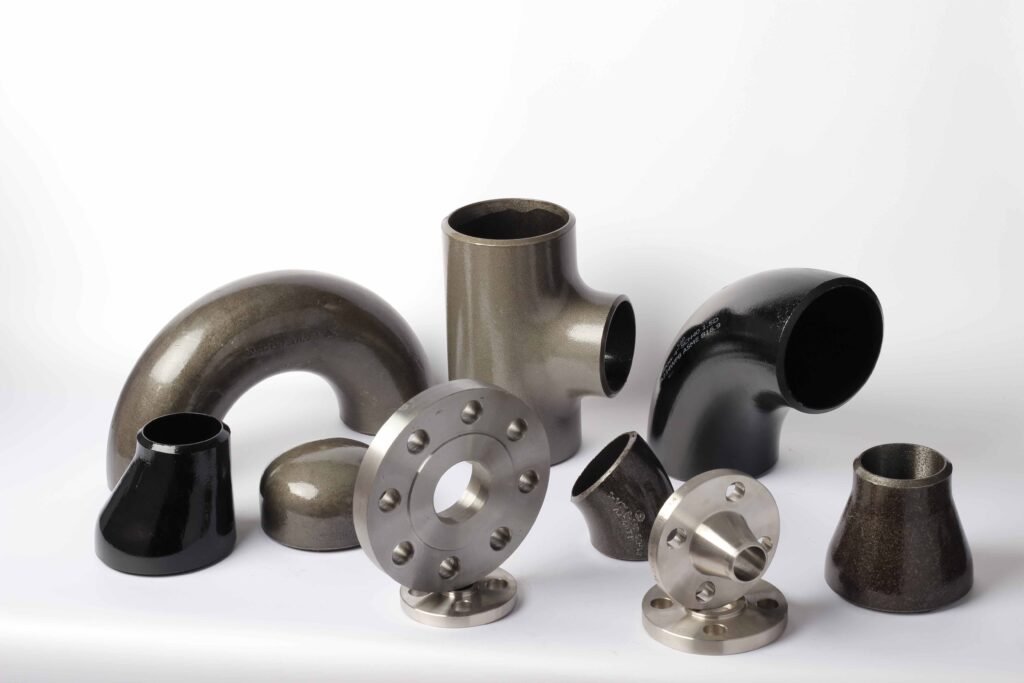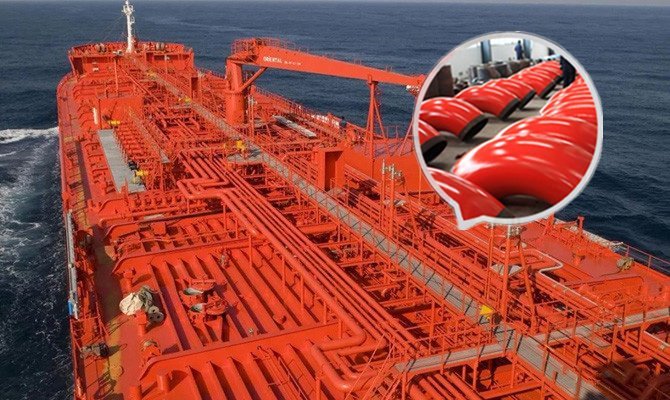In the high-stakes world of the chemical and petrochemical industries, the strength and reliability of every component in a piping system are critical. Butt weld pipe fittings are a cornerstone of these systems, valued for their durability and ability to create strong, leak-proof connections. By welding these butt weld fittings directly to pipes, a continuous and robust system is formed, which is essential for safe and efficient operations.
What Are Butt Weld Pipe Fittings?
Butt weld pipe fittings are components that allow for changes in direction, branching, or changes in pipe diameter, and are connected by welding them to the pipe. This “butt-welding” process, where the fitting and pipe are placed end-to-end and welded together, creates a seamless and powerful joint. This category includes a variety of fittings like elbows, tees, reducers, and caps.

Key Types of Butt Weld Pipe Fittings and Their Roles:
Piping systems rely on different types of butt weld fittings to function correctly. Each fitting has a specific purpose to manage the flow of fluids safely and effectively.
- Elbows: Used to change the direction of flow, typically at 45° or 90° angles.
- Applications: Used in situations where the piping layout requires changes in direction, such as around corners or obstacles.
- Tees: Allow a single pipe to be split into two or to merge two lines into one. They come in equal sizes or with a reduced-diameter branch.
- Applications: Commonly used in branch connections for distributing or collecting fluids.
- Reducers: These fittings connect pipes of different sizes. Concentric reducers are used in vertical pipes, while eccentric reducers are used in horizontal lines to maintain the top or bottom level.
- Applications: Used to transition between different pipe sizes, often seen in pump inlet and outlet connections.
- Caps: Used to seal the end of a pipe.
- Applications: Used to seal off the end of a piping system, often in temporary or permanent applications.
- Stub Ends: Paired with lap joint flanges, they are used in systems that need to be taken apart regularly for maintenance or inspection.
- Applications: Used in systems where the piping needs to be frequently dismantled for inspection, cleaning, or replacement.
- Crosses: A four-way fitting used for intersecting pipe runs, though less common due to the stress they can create.
- Applications: Used in systems requiring four-way connections, but less common due to the stress and complexity they introduce to the piping system.
- Bends: Similar to elbows but with a larger radius, often custom-made for smoother flow.
- Applications: Used where standard elbows are not suitable, providing smoother flow transitions.
These buttweld steel pipe fittings are fundamental to building efficient and safe piping networks in demanding industrial environments.
Where Are Butt Weld Pipe Fittings Used?
The strength and reliability of butt weld fittings make them indispensable in a variety of industrial settings:
- Chemical and Petrochemical Plants: These facilities depend on the robust connections of butt weld fittings to handle corrosive substances and high pressures safely.high-temperature and high-pressure environment of oil refineries, leak-proof and durable fittings are essential.
- Pharmaceutical and Food & Beverage Industries: The smooth interior of butt weld fittings is crucial for maintaining sanitary conditions and preventing contamination.
- Power Generation: Power plants utilize these fittings for high-pressure steam and water pipelines.
- Oil and Gas Industry: Essential for the safe and secure transportation of oil and natural gas through pipelines.
- Water Treatment: Used in systems that transport the various chemicals needed for water purification.

The Advantages of Using Butt Weld Pipe Fittings
The widespread use of butt weld fittings in demanding industries is due to their significant benefits:
- Unmatched Strength and Reliability
The welding process creates a joint that is as strong as the pipe itself, forming a continuous metal structure. This makes the connection highly reliable and less prone to leaks, which is vital when transporting hazardous or high-pressure fluids. - Improved Flow Efficiency
Butt weld fittings provide a smooth interior surface without any interruptions or sharp edges.This design minimizes pressure drops and turbulence, leading to more efficient flow and reducing the risk of erosion and corrosion. - Exceptional Durability
Constructed from high-quality materials like stainless steel and other alloys, these fittings can withstand harsh conditions, including extreme temperatures and corrosive chemicals. This durability ensures a long service life and reduces the need for frequent maintenance. - Versatility in Application
With a wide variety of materials, sizes, and shapes available, butt weld fittings can be tailored to meet the specific requirements of any piping system. - Enhanced Safety
The strong, leak-proof nature of butt-welded joints significantly improves the safety of a piping system. This is a critical factor in industries where leaks could lead to exposure to dangerous substances. - Long-Term Cost-Effectiveness
While the initial installation may require skilled labor, the long-term benefits of reduced maintenance and a lower risk of leaks make butt weld fittings a cost-effective choice over time. - Adherence to Industry Standards
Butt weld fittings are manufactured in compliance with international standards such as ASME B16.9, ensuring their quality and reliability for critical applications.
RAYOUNG is the high quality buttweld pipe fittings manufacturer exporter in China, we provide all kind of the industrial pipe fittings for projects wherever liquids, gases, chemicals and other fluids are created, processed, transported, or used.
+86-18003119682
info@hb-steel.com

